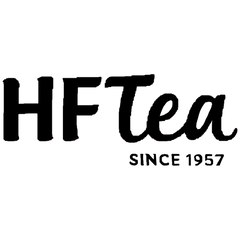Explore The Long History And Rich Cultural TCM Roots of Heng Foh Tong
Step foot inside a Traditional Chinese Medicine (TCM) medical hall and your senses are besieged with a cacophony of colours, fragrances, sounds and nostalgia. Any Singaporean kid is familiar with the densely packed storefront and the various bottles of herbs and concoctions from a TCM store, even if not all may have an idea of what goes on inside. TCM medical halls have a rich and colourful history, and are a staple in the tapestry of Singaporean arcades.
Heng Foh Tong has been in business since 1957, but its owners rely on over a hundred years of combined TCM experience to provide our clientele with TCM herbs that have worked for generations. Along with the passing on knowledge are items commonly seen at a TCM shop, particularly some that have long served Heng Foh Tong well.
Custom Drawers
With over 600 medicinal herbs commonly found in a typical medical hall, it’s important to stay organised. Most medical halls will have a custom drawer cabinet behind the counter, often specifically arranged according to efficiency, flavours and fragrances, and the operational needs of the shop. Learning the right combinations of herbs for various situations requires years of practice and familiarity with the products, especially if you want to experiment with their tastes and effectiveness. TCM experts can identify an herb-based on its shape, smell and colour alone, and can tailor the concoction according to how you like your brews.
At Heng Foh Tong, the drawer cabinet in our Bukit Batok outlet was carved in Singapore by Shanghai master-carvers in 1957. Each herb is inscribed on the wooden surface, making it easy for the staff to pick your orders off the shelf in a jiffy.

Iconic Glass Lantern Displays
Another familiar sight at a medicine hall is the rows of beautiful glass canisters holding various items important to TCM. For newer shops, these vessels are simple cylinders meant as storage, but long-established medical halls like Heng Foh Tong display antique glass lanterns that have been traditionally used to house items like tonics and pearls for beauty therapy. The beautifully curved shape amplifies the light and magnifies the contents of the jar, adding to the aesthetic clutter that TCM medical halls are known for.
As a testament to its antiquity, the glass bottles in Heng Foh Tong are inscribed with the names of the herbs they contain, hand-written by the founders in 1957.
Weighing The Herbs
Have you noticed the weighing scales attached to the cabinet? These scales balance a small weight and a saucer meant for measuring herbs. Medicinal herbs are traditionally measured in tael, approximately 38 grams, and are also the same unit of measurement used to weigh gold!
While these scales are useful for dispensing herbs, an experienced TCM practitioner can accurately grab herbs of the right proportions in a process known as “zhua yao” or literally, “grabbing medicine”.
The Herbs
Displaying the available herbs helps customers to find the right cordyceps and ginseng that they are looking for, and for some, it has become a point of pride. Ginseng is one of the most sought-after medicinal herbs, thanks to its long famed toning of the Qi, or life force, a cornerstone of TCM teachings.
At Heng Foh Tong, the decades-old giant ginseng steeped in strong liquor is a familiar sight. We even cheekily nicknamed it “Michelin”, after the popular chunky mascot.
Preparing The Herbs
There are two things that make distinct sounds in a TCM shop: the pounding and grinding of herbs and the relatively new cutting machines used to slice herbs to thin trimmings. Pounding the herbs to powder is an age-old tradition meant to make them easier to brew and mix, and with that tradition is the trusty mortar and pestle.
The mortar and pestle at Heng Foh Tong are more than a tool, though. Well-worn and repaired, it is a testament to the frugal and humble lifestyle that the owners employed, and the hard work they put in their trade. Since 1957, this particular mortar and pestle have ground more than a thousand concoctions and continues to serve the new generation with traditional Chinese medicine.

Abacus
Traditionally, computing your purchase in a TCM shop would involve the reassuring clatter of an antique abacus. Even though cash registers and other POS machines are technologically advanced, an abacus in the hands of experienced shop owners can still check out your purchase faster and more accurately. Plus, watching the beads slide across the frame quickly is much cooler than watching someone punch numbers on a calculator.
Antique Seals
Known as chops, these antique seals traditionally mark the packages bought from a TCM medical hall. For Heng Foh Tong, two sizes of chops were intricately handcrafted to fit their varying sizes of pink packaging paper. These markings are still used today and are synonymous to the medical hall’s branding.

The Altar
Tradition dictates gratitude to particular deities, and in Heng Foh Tong, the altar is dedicated to three benefactors: Guan Yin (“ 观音菩萨” in Mandarin ), the Goddess of Mercy; Guan Gong (“关公”), the God for Business Wealth, and Bao Sheng Da Di (“保身大帝”), the God of Health. Praying to these three deities daily reminds the owners of the values of kindness, compassion and competency, which keep their company grounded and successful.
With the National Heritage Board recognising the importance of preserving TCM traditions, Heng Foh Tong celebrates the long legacy of 2500 years of TCM knowledge passed on for generations. TCM is more than just medicinal relief, but rather, a heritage worthy to be lived every day. This year, we are honored to be featured in Singapore Heritage Festival 2021.
Want to know more about our TCM offerings? Visit our website at hengfohtong.com/








